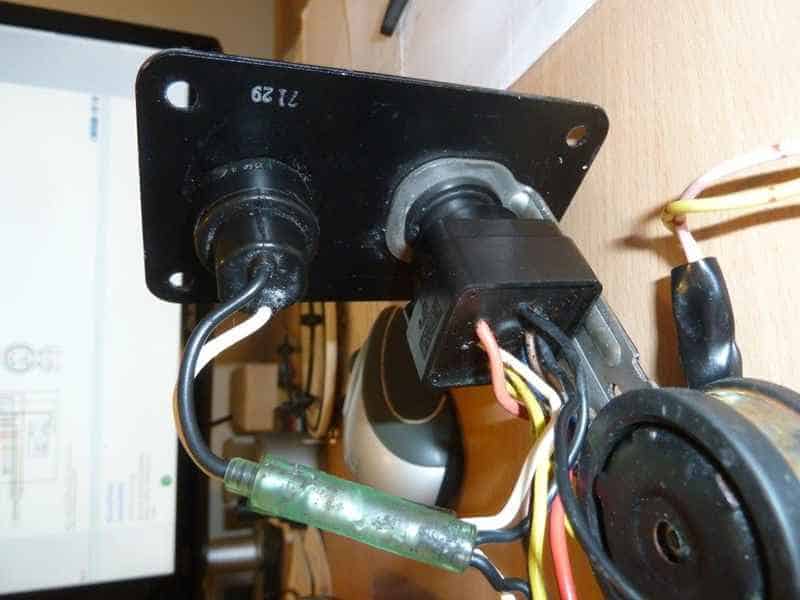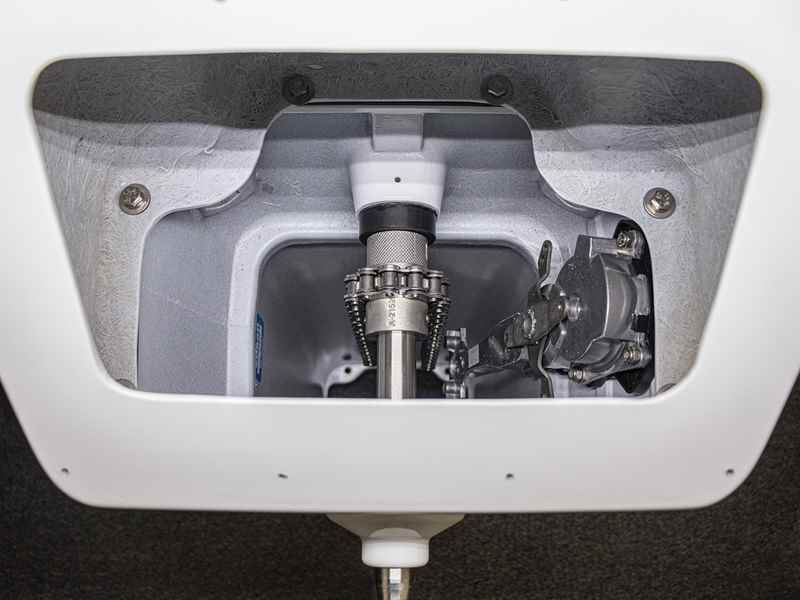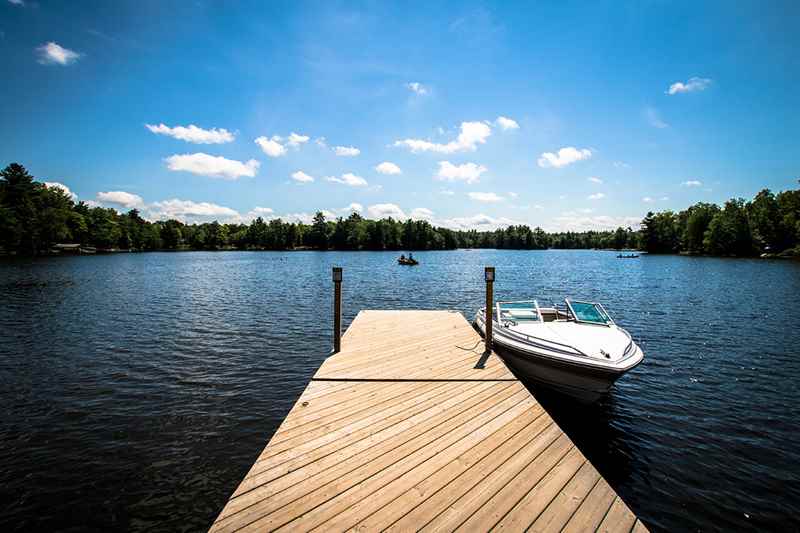Table of Contents
Introduction on how to hotwire a boat
Imagine this: you’re ready for a day on the water, the sun is shining, and the gentle lapping of waves beckons. But as you reach for your boat keys, your heart sinks. They’re not there. Losing your boat keys can quickly turn an exciting day into a frustrating ordeal. The inconvenience is palpable; it can mean being stranded, delayed plans, and in some cases, costly locksmith services.
But what if there was another way? Knowing how to hotwire a boat isn’t just a trick for action movies—it’s a practical skill that could save the day. In the rare event that you find yourself keyless, understanding the workaround could be the difference between being stuck at the dock and salvaging your aquatic adventure.
As we delve into this topic, keep in mind that this skill is about practicality and necessity. We don’t encourage you to hotwire a boat as a regular practice, but it’s important knowledge for those unexpected moments. So let’s prepare you to tackle such a situation with confidence and caution, ensuring that you’re never left adrift without options and know how to hotwire a boat.
Understanding Boat Ignition Systems
The ignition system is the starting point of your marine experience when you learn how to hotwire a boat. It consists of several key parts: the ignition switch, starter motor, solenoid, and battery. The ignition switch is your go-to when you want to bring the engine to life; turning it sends an electric signal to the starter solenoid, which in turn engages the starter motor. This motor then cranks the engine, setting things in motion. The battery, of course, is the power source for this entire operation, supplying the necessary voltage for the ignition system.
Differences Between Car and Boat Ignition Systems
While boat and car ignition systems share some similarities, they differ significantly. Boats typically operate in more challenging environments – think moisture, salt, and constant movement. Therefore, marine ignition systems are designed to be waterproof and resistant to corrosion. They often include safety features that cut the engine in case of emergencies, such as a man-overboard situation, something cars don’t typically have to consider.
Safety Precautions and Legal Considerations
How to hotwire a boat, while a useful skill, carries with it a need for caution. Safety first: always ensure the area is clear, and wear protective gear to guard against electrical shocks or shorts. Moreover, hotwiring can be seen as tampering or theft, so it’s critical to only employ these measures on a boat you own or have permission to operate. Remember, bypassing an ignition system without authorization could land you in legal hot water.
Tools and Preparation
Before you think about hotwiring your boat, you’ll need the right tools for the job. Below is a list of essential tools you will need to know how to hotwire a boat.
Essential Tools for Hotwiring
- Insulated Wire Strippers: Essential for removing the insulation from wires without causing damage.
- Screwdrivers: A set of flat-head and Phillips-head screwdrivers can help you access the ignition system.
- Electrical Tape: After stripping wires, you’ll need this to safely cover exposed wiring and prevent short circuits.
- Wire Connectors: These can be handy for connecting wires without soldering.
- Multimeter: Useful for testing connections and ensuring that you’re working with the correct wires.
- Jumper Wires: Sometimes necessary to bridge connections within the ignition system.
- Flashlight or Headlamp: Good visibility is crucial, especially if you’re dealing with small components in low light.
With these tools gathered, you’re one step closer to getting your boat back out on the water. But before you dive into the wires, let’s talk safety before you learn how to hotwire a boat.
Safety Gear and Precautions
When it comes to how to hotwire a boat, water and electricity make for a dangerous combination. Safeguarding yourself and your vessel is paramount.
- Non-conductive Gloves: These will protect you from electric shocks.
- Rubber-soled Shoes: They provide additional insulation against electric shock.
- Fire Extinguisher: Always have one on hand in case of an electrical fire.
- First Aid Kit: For treating any accidental cuts or burns during the process.
Beyond gear, ensure the boat is in a secure area, turned off, and the battery is disconnected before starting. Remember, tampering with electrical systems carries inherent risks, so proceed with caution.
Creating a Safe and Controlled Environment
Before beginning about how to hotwire a boat, it’s important to establish a controlled setting:
- Anchor your boat securely or make sure it’s tied off to the dock to prevent any unexpected movement.
- Ensure the area is well-lit. This might mean waiting until daylight or setting up additional lighting.
- Clear the area of any flammable materials, and make sure the space is well-ventilated to avoid the buildup of fumes from fuel or solvents.
- Inform someone nearby of what you’re doing—having another person around can be invaluable in case of an emergency.
- Lastly, review the steps you plan to take. Confidence in your actions is essential for a smooth process.
How to hotwire a boat is not something to take lightly. It requires preparation, the right tools, and a thorough understanding of what you’re about to do. Safety should always come first, so if at any point you feel uncertain, seek professional assistance.
Now that we’ve covered the essentials of tools, safety gear, and the importance of a controlled environment, we’re ready to look at the actual steps of hotwiring a boat. Stay tuned for detailed instructions that could get you out of a bind—or better yet, remind you to make a spare set of keys!
Step-by-Step Guide on How to Hotwire Your Boat
Imagine this: you’re standing on the dock, the breeze is gentle, and the sun is just right. But there’s a snag — the boat keys are nowhere to be found. The good news? You can still set sail if you know how to hotwire a boat. Let’s dive into the steps that will help you overcome this hurdle, shall we?
Understanding Your Ignition Wires
First things first, you need to get familiar with the ignition wires of your boat if you want to know how to hotwire a boat. Typically, you’ll find a bundle of wires behind the ignition switch. There should be a red wire, which is the battery or power cable, along with one or more additional wires that could be for the starter or ignition. Your task is to identify these correctly because mixing them up is not an option.
Accessing the Ignition System
To access the wires, you will usually need to remove the panel covering the ignition system. This is where your screwdriver comes in handy. Once you have access, use your flashlight to light up the area – seeing what you’re doing is crucial.
Stripping the Wires
With your wire strippers, carefully strip the end of the red wire to expose the metal underneath. You’ll want to do the same for the starter wire. This might feel a bit like surgery, so take your time to avoid any accidental nicks or cuts to other wires.
Creating the Connection
Now, it’s time to make a connection. Twist the stripped ends of the red and starter wires together. Some boats may require you to connect a third wire for the ignition circuit; check your boat’s manual if you’re unsure. Once twisted, secure them temporarily with wire connectors or electrical tape.
Testing the Connection
With the wires connected, it’s the moment of truth. Touch the battery wire to the starter wire briefly. If all goes well, the engine should turn over. If nothing happens, double-check your connections and make sure you’re using the correct wires.
Safety Checks
If the engine starts, immediately separate the wires to avoid any potential damage. Remember, this is a temporary fix, and running an engine without a proper ignition system is not safe for extended periods.
Troubleshooting Common Issues
Sometimes, things don’t go as planned. If the engine doesn’t start, check your connections again. A multimeter can be helpful here to ensure the current is flowing as it should. If everything seems fine electrically, the problem may lie elsewhere in the engine, and it might be time to call in a professional.
Knowing how to hotwire your boat is indeed a useful skill, but it’s essential to remember that this is for emergencies only. Always follow legal guidelines and seek professional help when in doubt. Now, let’s prepare to wrap up our guide and get you ready to enjoy the waters safely.
Legal and Ethical Considerations
While the prospect of hotwiring your boat may appear to be a promising solution in a pinch, it’s crucial to navigate the murky waters of legality and ethics before you dive in. Let’s explore the potential legal ramifications and ethical dilemmas that come with this act.
Understanding the Legal Implications
Taking the helm without the key can land you in choppy legal seas. Unauthorized hotwiring, even of your boat, can be construed as tampering or vandalism in some jurisdictions. The law typically requires that you exhaust all other options, such as contacting a locksmith or the boat manufacturer for a replacement key, before attempting to start your boat without the key. If you’ve found hotwiring without evidence that you’ve sought these avenues, you could face penalties or fines. Always consider the legal context of your actions and consult with authorities if in doubt.
Ethical Considerations in Emergencies
Mariners often speak of the sea’s unforgiving nature, and sometimes, emergencies demand immediate action. What if you’re stranded and hotwiring is the only way to ensure your safety? Ethically, preserving life and well-being may take precedence over adherence to standard procedures. In a true emergency, where there is clear and immediate danger, hotwiring your boat could be considered a necessary action. However, this should be a last resort, not a go-to fix. Document the situation as thoroughly as possible to justify your decision should questions arise later.
Choosing the Right Course of Action
So, when is it appropriate to know how to hotwire a boat? The guiding principle should be necessity, not convenience. Before you reach for the wires, assess the urgency of your situation. Is there a threat to life or property that warrants such an action? Have you attempted all other solutions? Are you prepared to explain and possibly defend your choice? If you’ve answered yes to these questions, and the situation demands immediate action, then hotwiring could be justified. In all other cases, patience is a virtue. Seek out alternatives, like getting a spare key made or calling for professional assistance.
Conclusion
We have navigated the choppy waters of a less-than-ideal situation: losing your boat keys. From understanding your boat’s ignition system to the meticulous process on how to hotwire a boat, we’ve charted a course that requires both caution and knowledge. As we dock after our journey, let’s revisit the crucial insights shared in this blog post when learning about how to hotwire a boat.
Firstly, the anatomy of a boat’s ignition system is unique, and recognizing this is key to any troubleshooting. Unlike cars, boats have specific safety features and systems designed for marine environments. We also learned that while hotwiring can be a handy skill, it comes with significant safety, legal, and ethical considerations. It’s not merely about connecting wires; it’s about understanding the gravity of what you’re undertaking.
Preparation is the lifejacket of any boating emergency. Essential tools and safety gear are your best friends in times of trouble. However, before diving into the hotwiring process, we emphasized creating a controlled environment to ensure your safety and that of your vessel.
The step-by-step guide provided should serve as a beacon on how to hotwire a boat, illuminating the path forward should you find yourself keyless. But remember, like navigating through the fog, proceed with extreme caution. If at any point you feel out of your depth, it’s time to radio for help from a professional.
In the spirit of responsible boating, let us reinforce the mantra of preparedness and knowledge. The sea of unexpected situations is vast and unpredictable, but with the right mindset and preparation, you can weather any storm. Practice makes perfect, and familiarizing yourself with your boat’s mechanics could one day make all the difference.
However, let’s not forget that with great power comes great responsibility. Hotwiring is a serious action, reserved for dire straits and always within the confines of the law. As responsible mariners, we must respect the integrity of the vessels we command and the laws that govern them.












